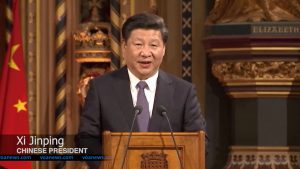References
1 “Professional Licensing and Certification in the U.S.”, World Education Services webpage, http://www.wes.org/ info/licensing.asp.
2 Michael Sapiro,“What is the Difference Between A Teaching License and Teaching Certification?” Concordia Online Blog, Concordia University (September 3, 2015), https://online.cuw.edu/blog/what-is-the-differencebetween- a-teaching-license-and-a-teachingcertification/.
3 Conor P. Williams, Amaya Garcia, Kaylan Connally, Shayna Cook, and Kim Dancy, Multilingual Paraprofessionals: An Untapped Resource for Supporting American Pluralism (Washington, D.C.: New America, June 2016), https://na-production.s3.amazonaws.com/ documents/DLLWH_ParasBrief6.1.pdf.
4 Jorge P. Osterling and Keith Buchanan, “Tapping a Valuable Source for Prospective ESOL Teachers: Northern Virginia’s Bilingual Paraeducators Career-Ladder School- University Partnership,” Bilingual Research Journal 27, no. 3 (2003): 503–521; Michael Genzuk and Reynaldo Baca, “The Paraeducator-to-Teacher Pipeline: A 5-Year Retrospective on an Innovative Teacher Preparation Program for Latina(os),” Education and Urban Society (November 1998): 73–88; Christine L. Smith, Focus on an Untapped Classroom Resource: Helping Paraprofessionals Become Teachers (Atlanta, GA: Southern Regional Education Board, April 2003), http://files.eric.ed.gov/ fulltext/ED477170.pdf; Jorgelina Abbate-Vaughn and Patricia C. Paugh, “The Paraprofessional-to-Teacher Pipeline: Barriers and Accomplishments,” Journal of Developmental Education 33, no.1 (2009): 14–27, http:// files.eric.ed.gov/fulltext/EJ887836.pdf; Conor P. Williams, Amaya Garcia, Kaylan Connally, Shayna Cook, and Kim Dancy, Multilingual Paraprofessionals: An Untapped Resource for Supporting American Pluralism (Washington, D.C.: New America, June 2016), https:// na-production.s3.amazonaws.com/documents/ DLLWH_ParasBrief6.1.pdf; Patricia J. Bonner, Maria A. Pacino, and Beverly Hardcastle Stanford, “Transition from Paraprofessionals to Bilingual Teachers: Latino Voices and Experiences in Education,” Journal of Hispanic Higher Education 10, no. 3 (2011): 212–225; Ellen M. Rintell and Michelle Pierce, “Becoming Maestra: Latina Paraprofessionals as Teacher Candidates in Bilingual Education,” Journal of Hispanic Higher Education 2, no. 1 (2003): 5–14, http://citeseerx.ist.psu.edu/viewdoc/download?doi=10.1.1.949.1148&rep=rep1&type=pdf; and Kerri J. Wenger, Tawnya Lubbes, Martha Lazo, Isabel Azcarraga, Suzan Sharp, and Gisela Ernst-Slavit, “Hidden Teachers, Invisible Students: Lessons Learned from Exemplary Bilingual Paraprofessionals in Secondary Schools,” Teacher Education Quarterly 31, no. 2 (2004): 89–111, http://files.eric.ed.gov/fulltext/EJ795248.pdf.
5 Conor P. Williams, Amaya Garcia, Kaylan Connally, Shayna Cook, and Kim Dancy, Multilingual Paraprofessionals: An Untapped Resource for Supporting American Pluralism (Washington, D.C.: New America, June 2016), https://na-production.s3.amazonaws.com/ documents/DLLWH_ParasBrief6.1.pdf.
6 National Education Association, “Getting Educated: Paraeducators,” http://www.nea.org/home/18605.htm.
7 Laura Goe and Lauren Matlach, Supercharging Student Success: Policy Levers for Helping Paraprofessionals Have a Positive Influence in the Classroom (Washington, D.C.: Center on Great Teachers and Leaders, American Institutes for Research, September 2014), http:// www.gtlcenter.org/sites/default/files/Snapshot_ Paraprofessional.pdf.
8 Charles T. Clotfelter, Steven W. Hemelt, and Helen F. Ladd, Teaching Assistants and Nonteaching Staff: Do They Improve Student Outcomes? CALDER working paper 169 (Washington, D.C.: National Center for Analysis of Longitudinal Data in Education Research, October 2016), http://www.caldercenter.org/sites/default/files/ WP%20169.pdf.
9 Ibid.
10 “Table 204.27,” Digest of Education Statistics 2015 (Washington, D.C.: National Center for Education Statistics, 2016), http://nces.ed.gov/pubs2016/2016014. pdf.
11 Rachel A. Valentino and Sean F. Reardon, “Effectiveness of Four Instructional Programs Designed to Serve English Language Learners: Variation by Ethnicity and Initial English Proficiency,” Educational Evaluation and Policy Analysis 37 (April 2015): 612–637; “Study of Dual- Language Immersion in the Portland Public Schools: Year 4 Briefing” (Washington, D.C.: American Councils for International Education, November 2015), https://res. cloudinary.com/bdy4ger4/image/upload/v1446848442/DLI_Year_4_Summary_Nov2015v3_1_jwny3e.pdf; Ilana M. Umansky and Sean F. Reardon, “Reclassification Patterns Among Latino English Learner Students in Bilingual, Dual Immersion, and English Immersion Classrooms,” American Educational Research Journal 51, no. 5 (October 2014): 879–912.
12 U.S. Department of Education, Teacher Shortage Areas Nationwide Listing 1990–1991 Through 2016–2017 (Washington, D.C.: Office of Postsecondary Education, 2016), https://www2.ed.gov/about/offices/list/ope/ pol/tsa.html; Gabriela Uro and Alejandra Barrio, English Language Learners in America’s Great City Schools (Washington, D.C.: Council of the Great City Schools, 2013), 10, http://files.eric.ed.gov/fulltext/ED543305.pdf.
13 U.S. Department of Education, Teacher Shortage Areas Nationwide Listing 1990–1991 Through 2016–2017 (Washington, D.C.: Office of Postsecondary Education, 2016), https://www2.ed.gov/about/offices/list/ope/pol/ tsa.html.
14 The State of Teacher Diversity in American Education (Washington, D.C.: Albert Shanker Institute, September 2015), http://www.shankerinstitute.org/sites/shanker/ files/The%20State%20of%20Teacher%20Diversity%20 (3)_0.pdf; and The State of Racial Diversity in the Educator Workforce (Washington, D.C.: U.S. Department of Education, July 2016), http://www2.ed.gov/rschstat/ eval/highered/racial-diversity/state-racial-diversityworkforce. pdf.
15 Hannah Putman, Michael Hansen, Kate Walsh, and Diana Quintero, High Hopes and Harsh Realities: The Real Challenges to Building a Diverse Workforce (Washington, D.C.: Brookings Institution, August 2016), https:// www.brookings.edu/wp-content/uploads/2016/08/ browncenter_20160818_teacherdiversityreportpr_ hansen.pdf.
16 Kaylan Connally and Kim Dancy, “Paraprofessionals Could Help Solve Bilingual Teacher Shortages,” EdCentral (blog), New America, April 26, 2016, https://www. newamerica.org/education-policy/edcentral/bilingualteacher- shortages/; Kaylan Connally and Melissa Tooley, “What Is the Future of Teacher Diversity in U.S. Schools?” New America Weekly, New America, October 1, 2015, https://www.newamerica.org/weekly/94/what-is-thefuture- of-teacher-diversity-in-us-schools/.

 While Chinese President Xi Jinping has declared war on poverty, and instructed local governments to create a “moderately well-off society” by the beginning of 2021, in time for the centenary of the ruling Communist Party, regional authorities are failing to teach ethnic minority groups enough Putonghua [Modern Standard Mandarin], Zhu Weiqun, said in an article in the state-backed Global Times newspaper.
While Chinese President Xi Jinping has declared war on poverty, and instructed local governments to create a “moderately well-off society” by the beginning of 2021, in time for the centenary of the ruling Communist Party, regional authorities are failing to teach ethnic minority groups enough Putonghua [Modern Standard Mandarin], Zhu Weiqun, said in an article in the state-backed Global Times newspaper.

 Revitalization efforts for the Hawaiian language are now being used as a model for success for other indigenous language programs. Advocates of endangered languages visited the University of Hawaii at Manoa this month for the fifth annual International Conference on Language Documentation and Conservation. A large portion of that conference was the field study He ‘Ōlelo Ola Hilo. The study is hosted each year at UH Hilo in order for international language specialists to learn about the current revitalization efforts in Hawaii for students from preschool to college levels.
Revitalization efforts for the Hawaiian language are now being used as a model for success for other indigenous language programs. Advocates of endangered languages visited the University of Hawaii at Manoa this month for the fifth annual International Conference on Language Documentation and Conservation. A large portion of that conference was the field study He ‘Ōlelo Ola Hilo. The study is hosted each year at UH Hilo in order for international language specialists to learn about the current revitalization efforts in Hawaii for students from preschool to college levels.
 The Massachusetts Senate has unanimously approved the LOOK (Language Opportunity for Our Kids) bill that would allow school systems to bring back bilingual education, potentially ending a 15-year-old ban on schools teaching students academic courses in their native language.
The Massachusetts Senate has unanimously approved the LOOK (Language Opportunity for Our Kids) bill that would allow school systems to bring back bilingual education, potentially ending a 15-year-old ban on schools teaching students academic courses in their native language. Daniel Ward refuses to be distracted by efforts to divide supporters of public education
Daniel Ward refuses to be distracted by efforts to divide supporters of public education Minsk State Linguistic University (MSLU) will open Belarus’ first Chinese language and culture department in the new academic year, according to MSLU Rector Natalya Baranova.
Minsk State Linguistic University (MSLU) will open Belarus’ first Chinese language and culture department in the new academic year, according to MSLU Rector Natalya Baranova.

 The BBC has launched a new online section that delivers news exclusively in Pidgin for West African audiences. Pidgin is a language spoken by over 75 million Nigerians. While the number of speakers is large, Pidgin offers unique challenges: it is a language without official spelling or grammar that is in constant flux.
The BBC has launched a new online section that delivers news exclusively in Pidgin for West African audiences. Pidgin is a language spoken by over 75 million Nigerians. While the number of speakers is large, Pidgin offers unique challenges: it is a language without official spelling or grammar that is in constant flux.